
The NFL Scouting Combine is a fun potential introduction to the prospects who will star in late April’s NFL Draft. But it can also be confusing and misleading, especially if you consume the bulk of your NFL content through fantasy football.
I wrote this 2023 combine preview to help. It explains the most important drills and measurements for all the skill positions, illustrates their typical result ranges split by draft round, and identifies a 2023 prospect whose performance is particularly critical for his draft placement or fantasy potential. Hopefully this primer will focus your attention on the things that matter in this year’s combine. And let me and the NFL front offices know if you know which drills and measurements matter for quarterback evaluation. We sure could use the help.
All of the charted combine data is from 2008-22.
Running Backs
40-Yard Dash
The public discourse for the combine centers on the 40-yard dash, and so you might be surprised to see that the median time for running backs barely increases from 4.46 seconds for Round 1 picks to 4.50 seconds for Round 2, 3 and 4 picks. The key point here and for everything in the combine is that no one measurement or drill paints a full picture of the prospects or the demands of their positions in the NFL. And the running back 40 picture is particularly muddy. The freakish of freak athletes like Chris Johnson (4.24 seconds) and C.J. Spiller (4.27) tend to find their way into the first round and pull those lower quartiles down. But many of the fastest late-round backs are undersized and drafted to play special teams. And many of the slowest late-round backs are actually fullbacks. An unexpectedly slow 40 time could signal that a prospect is less athletic than he appears on film, which is important context especially for players who played in non-power conferences. But if all you knew about a prospect was his expected draft round and his 40 time, the former is dramatically more important for fantasy projection. And in fact, backs can rarely even take advantage of their top-end speed in game situations, which is why the combine added other drills like the 3-cone and short shuttle that aim to measure requirements of the position like quickness and cutting ability that more frequently come into play.
Player to watch: Will Devon Achane run a sub-4.3-second 40 time?
While I don’t lose sleep over the modest 40 times of bigger backs, undersized running back prospects need to justify their early-round consideration with standout traits to outweigh the risk that they won’t hold up over 200 or more professional carries per season. I highlighted Johnson’s and Spiller’s outlier 40 times earlier because both backs were undersized at 5-foot-11 and, respectively, 195 and 194 pounds. Texas A&M prospect Devon Achane may play a bit bigger than his 185 pounds since he’s very short for the position at just 5-foot-9. But I’m still skeptical he ever repeats his 196 junior carries at the next level. A sub-4.3-second 40 time wouldn’t just convince a team to draft him the first couple of rounds and expand his leash of likely backfield opportunities. It would dramatically improve his fantasy potential since he will presumably need more explosive plays to offset fewer touches than his peers.
Speed Score
Back in his Football Outsiders days, Bill Barnwell squeezed a bit more utility out of 40 times with a composite metric he created and called Speed Score. Speed Score adjusts prospect 40 times for their weight following the intuitive logic that a 4.4-second 40 time is more impressive for a 230-pound back than it is a 190-pound back. And the metric has proven to better predict professional success like average yards per season and more clearly separates prospects by their eventual draft rounds.
Player to watch: Will Bijan Robinson clear the 110.0 Speed Score benchmark?
Social media take culture makes it difficult to disentangle whether Texas’ Bijan Robinson is the standout prospect of an otherwise uninspiring running back draft class or a generational talent who would be the best prospect in many classes. Speed Score should help answer that question. Robinson won’t need to challenge Saquon Barkley’s standard of a 124.3 Speed Score from 2018 to keep me excited. But I want to see him clear what has been a benchmark score of 110.0. The bulk of the best bell-cow backs in the modern NFL have cleared that threshold, from Jonathan Taylor (119.0) to Derrick Henry (118.4), Breece Hall (116.9), Ezekiel Elliott (116.3), J.K. Dobbins (115.2), Kenneth Walker (114.7), Joe Mixon (112.2) and Leonard Fournette (110.2).
3-Cone Drill
The 3-cone drill asks prospects to accelerate quickly out of turns and — at least for me — evokes an edge rusher trying to beat an offensive tackle on the outside. That said, the drill has more markedly separated backs by their eventual draft rounds than the 40-yard dash has, with 6.93- and 6.95-second medians in the first two rounds, a 7.04-second median in the third and fourth rounds, and a 7.09-second median in the fifth to seventh rounds. And subjectively, I’m more concerned with a running back prospect’s 3-cone and short shuttle times than his 40 time because they aim to measure the quickness and acceleration he will need on all of his carries, not the top-end speed he will only need on breakaways.
Player to watch: Will Keaton Mitchell run a 6.9-second 3-cone time?
Keaton Mitchell closely mirrors Devon Achane with a 5-foot-9 and 188-pound frame. But Mitchell offered a bit more evidence of his potential for heavy NFL workloads with 174 carries in 2021 and 201 in 2022. And he convinced me he has the necessary top-end speed to score touchdowns from distance at the next level with an incredible 7.2 yards per attempt last season with myriad breakaway carries. My major reservation for Mitchell comes from his level of competition at ECU in the American Conference. And a 6.9-second 3-cone time would ease my concerns that circumstances spurred his frequent trips to the second level. Mitchell is noticeably bigger than the now-infamous tweener Dexter McCluster (165 pounds), and so I don’t expect him to match the latter’s 6.73-second time. But receiving-oriented backs like Felix Jones, Giovani Bernard, Ameer Abdullah and Chase Edmonds all hit or bested a 6.9-second 3-cone time. And they all outweighed Mitchell by between 8 and 22 pounds.
20-Yard Shuttle
The 20-yard shuttle requires prospects to accelerate out of 180-degree turns that I suspect best mimic the cuts a back will want to make on an actual carry. And the short shuttle shines for both the separation it shows by draft round and the closeness of the results of its eventual Round 1 draft picks. If he can’t run a 4.4-second shuttle, then a running back probably isn’t a first-round talent.
Player to watch: Will Tank Bigsby run a 4.22-second short shuttle?
5.4 yards per attempt might lead the position in the NFL. But it is modest for college backs even in the competitive SEC. Based only on that efficiency, junior prospect Tank Bigsby would likely fall to Day 3 of the draft. But PFF charted Auburn as having the third-worst run-blocking line in the conference. And Mike Renner described Bigsby as the jump-cut king of college football. LeSean McCoy may be the back most famous for that skill, and he shredded the short shuttle in 4.01 seconds. But even matching Christian McCaffrey‘s and Jamaal Charles’ 4.22-second times would help Bigsby convince a lot of scouts that he is a better runner than his college statistics suggest.
Bench Press
There may not be a clear visual trend between bench reps and draft position. But Rounds 5-7 owe their median advantage of 20 reps versus 19 for Rounds 1, 3 and 4 to some heavy-hitting fullbacks. And the 21-rep Round 2 high median makes more sense when you consider what teams expect from their early-round backs. First-round picks are super valuable. And to justify one on the most volatile, most injury-prone position, teams typically target players with the versatility to contribute on all three downs. Nick Chubb caught just 13 passes in his final three seasons at Georgia and does most of his professional damage on early downs. But Chubb also paces the position every year in average yards after contact. And he teased that power with his ridiculous total of 29 bench reps at the combine.
Player to watch: Will Zach Charbonnet put up 25 bench reps?
Thanks to a 3-inch height advantage, Zach Charbonnet is much smaller than Chubb than his just 5-pound shortfall would on its own suggest. It is probably unrealistic to expect the UCLA product to match Chubb and former first-rounders Saquon Barkley and Jonathan Stewart with 29 or 28 bench reps. But Charbonnet does not flash elite speed or quickness on film. His ticket to an NFL future will require that he translates his exceptional 4.15 college yards after contact per attempt to the next level. And teams will presumably want to see Charbonnet clear 25 bench reps to consider him in the second round. Pretty much every prospect who has and slipped to Round 3 or later has been a fullback.
Body Mass Index
Body mass index is hardly an advanced composite metric like Speed Score, and it shows very little difference among the draft rounds, with medians of 30.2, 30.3, 30.1 and 30.2. But the sprawl of the Day 3 quartiles hints at its importance as a Day 2 qualifier. The too-bulky backs become fullbacks. The too-slight backs become special teamers. Typically, the backs that see consistent offensive touches come from a narrow band between 29.0 and 31.0 BMI. And BMI captures the sliding scale of that size with respect to prospect height. Devin Singletary sounds small at 203 pounds. But since he is also short at 5-foot-7, he matches a heavier and taller back like Josh Jacobs (5-foot-10 and 220 pounds) in BMI and can reasonably be expected to handle similar workloads of 200 or more touches per season.
Player to watch: Will Jahmyr Gibbs clear a 28.0 BMI?
With unofficial measurements of 5-foot-11 and 200 pounds, Jahmyr Gibbs will push the lower boundary of the featured back BMI band. And he may have already tipped his future role as a member of an NFL committee with his 60-40 workload split with a less heralded Alabama teammate Jase McClellan in 2022. But if Gibbs measured shorter than 5-foot-11 or added even a bit of weight over 200 pounds, he would pass the 28.0 BMI benchmark and at least land in the Tony Pollard (28.3 BMI) range where one could picture a bright fantasy future. Any smaller and Gibbs might have to settle for a receiving back role.
Wide Receivers
40-Yard Dash
I suspect the 40-yard dash is even worse of a predictor of whether a wide receiver prospect will be successful than it is for running backs. But the 40 does differentiate likely wide receiver roles. And since there are more of those for receivers than running backs in the NFL, and since teams value different roles differently, the 40 sees its median times increase consistently from 4.40 in Round 1 to 4.44 in Round 2, 4.46 in Rounds 3-4 and 4.48 in Rounds 5-7. Don’t blindly push the fastest receiver to the top of your 2023 rookie rankings, especially since those players tend to be one-dimensional field-stretchers like John Ross and Darrius Heyward-Bey who never see the target volumes to reach the top of the fantasy leaderboards. But pay attention when a receiver plays one role in college and either exceeds or falls short of his 40 expectation at the combine. That could tip a role shift in the NFL that could make him a compelling fantasy sleeper or player to avoid.
Player to watch: Will Jaxon Smith-Njigba run a sub-4.5-second 40 time?
Jaxon Smith-Njigba is poised to fall in one of those latter two buckets. His 6-foot-0 and 197-pound frame is a common one for an NFL slot receiver. But Smith-Njigba would likely have played in the slot at Ohio State no matter his measurements with 2022 first-rounders Garrett Wilson and Chris Olave on the outside. And a fast 40 time could be a signal that he has the potential for an expanded NFL role. Justin Jefferson ran a lot of slot routes at LSU with Ja’Marr Chase out wide. But Jefferson teased his massive, and now realized, NFL potential with a 4.43-second 40 time at the 2020 combine. And Jefferson isn’t dramatically bigger than Smith-Njigba at just 6-foot-1 and 195 pounds.
3-Cone Drill
DK Metcalf may have debunked the importance of the 3-cone drill for his position with his horrific 7.38-second time and immediate NFL success, and the median time for every draft round falls between 6.93 and 6.96 seconds. But I continue to wonder whether Metcalf landed in the perfect situation for his skill set with a quarterback in Russell Wilson who threw an outlier rate of his passes deep and away from the middle of the field. And I suspect the wider quartiles outside the first round capture an averaging of massive receivers like Metcalf who run in straight lines and tiny receivers with the quick twitch to play from the slot and without the tools to play outside. The very best fantasy receivers like Mike Evans (6-foot-5 and 231 pounds, 4.26-second 3-cone) and Julio Jones (6-foot-3 and 220, 4.25) seem to have both.
Player to watch: Will Quentin Johnston run a 4.25-second 3-cone time?
TCU’s Quentin Johnston is this class’s monster candidate. But a bit skinnier at 6-foot-4 and 193 pounds, Johnston may comp better with A.J. Green (6-foot-4 and 207 pounds) than he does with Evans and Jones. I think fantasy players would be fine with that career! Meanwhile, it is likely a fairer target for Johnston to run a 4.25-second 3-cone with a little less bulk and would be about as promising. Green landed in a similar range with a 4.21-second time.
20-Yard Shuttle
The wide receiver short shuttle is the rare position drill with its best median in the third and fourth rounds (4.22 seconds). But while most running backs need to make routine sharp cuts, receivers need those more the closer they play to the middle of the field. And so the short-shuttle medalists are often smaller, slot-only receivers whose physical limitations keep them out of the first two draft rounds. It makes sense. Just don’t conflate actual draft position with potential fantasy value. Slot-only receivers often make more immediate impacts and more frequently outproduce their draft positions than the fliers with ideal NFL size but other reasons for their falls in the draft.
Player to watch: Will Josh Downs run a 4.10-second short shuttle?
At 5-foot-10 and 180 pounds, North Carolina’s Josh Downs has a classic slot-only receiver build. But in the modern NFL, the slot allows for more diverse routes than ever before. Tyler Lockett plays the slot with 4.31-second 40 speed and a slighter build of 182 pounds. Chris Godwin plays the slot with power from a bigger 208-pound frame. I think Downs comps better with a slower and less physical but exceptional route-runner Emmanuel Sanders. But all three of those players hit or beat a 4.10-second short shuttle time. And I think Downs will need the same to earn second-round consideration.
Vertical Leap
Like the 40-yard dash, the vertical leap indicates a capacity for certain roles more than it predicts success or failure. And while it draws a lot less attention than the 40, the vertical leap aligns with as important a skill for fantasy, which is contested catches — often in the red zone. First-round receivers can frequently hang their hats on multiple metrics and times. But most have also cleared a 36-inch vertical.
Player to watch: Will Rashee Rice vertical jump 36 inches?
Rashee Rice probably doesn’t have the speed or the athleticism to earn a first-round draft pick. But Rice is one of the sturdier receiver prospects in his class at 6-foot-2 and 203 pounds. And he still scored 9 and 10 touchdowns the last two years at SMU thanks to his excellent contested catch skills. Rice’s ability to translate that touchdown-scoring to the next level will likely depend on his leaping ability. And with a 36-inch vertical, he could feasibly follow Alshon Jeffery’s path to fantasy success. Jeffery had a similar build of 6-foot-3 and 218 pounds. And while he skipped the combine, he jumped 36.5 inches as his South Carolina Pro Day and went on to score between 6 and 10 touchdowns in four of his first seven professional seasons.
Broad Jump
The broad jump does not seem to reflect any actual demands of a football game. But for whatever reason, it seems to better capture a general athleticism than many of the more intuitive, focused drills and correlates with draft round with its steady decline in median distance from 124 to 123 and 122 inches.
Player to watch: Will Jordan Addison broad jump 123 inches?
Five years ago, I’m not sure USC’s Jordan Addison would have been a first-round draft candidate at just 6-foot-0 and 175 pounds and with a route tree that skews toward routes within 10 yards of the line of scrimmage. But traditionally undersized recent draft hits like Garrett Wilson (6-foot-0 and 192 pounds), Chris Olave (6-foot-1 and 188 pounds), and DeVonta Smith (6-foot-0 and 170 pounds) seem likely to have convinced teams to expand their definition of a potential No. 1 wide receiver. And all three teased their broader potential with 123-inch or better broad jumps (Smith at his Alabama Pro Day). Addison could cement his consideration in that mix with a similar performance.
Body Mass Index
Wide receivers have a different typical BMI band than running backs do. But theirs is similarly tight with interquartile ranges between 25.6 and 28.0 for every draft round.
Player to watch: Will Zay Flowers clear a 26.0 BMI?
I may be more open to traditionally undersized No. 1 receivers than I ever have been. But 165-pound second-round draft bust Tutu Atwell still weighs heavily on my mind. Boston College product Zay Flowers isn’t Atwell small. But at an unofficial 5-foot-10 and 177 pounds, his 25.4 BMI falls short of the 25th percentile of receivers from the first four draft rounds. And there are very few recent Day 2 and Day 3 success stories below a 26.0 BMI. At 5-foot-10, it’s just DeSean Jackson (25.1) — who ran a 4.35-second 40 and became one of the best deep threats in NFL history — and Diontae Johnson (26.0). And Jackson and several of the slightly taller small receivers like Darnell Mooney (25.0) and Wan’Dale Robinson (25.8) have had frequent injury issues. Flowers would only need four more pounds to hit that 26.0 BMI benchmark and ease some concerns for his durability. But his frame is so thin that I suspect he will struggle to add weight even with strength training. Proving otherwise at his combine weigh-in would allow me entertain a second-round selection.
Tight Ends
40-Yard Dash
Players can play dramatically different roles and still earn the tight end label. And that dissonance shows and often confuses the combine metrics for the position. But one truth jumps off the page. The tight ends who run a 4.52-second 40 time tend to be drafted in the first round. And even if they slip to the later rounds, those fastest tight ends have disproportionate fantasy success, likely due as much to a workload skew toward receiving over blocking as the athletic advantages their speedy times suggest. Evan Engram, Kyle Pitts, Noah Fant and O.J. Howard are the first-rounders everyone remembers for their combine speed. But Jared Cook and Darren Waller are speedy third- and sixth-round sleeper hits. And Albert Okwuegbunam could rediscover that potential from the fourth round now that Sean Payton is his head coach in Denver.
Player to watch: Will Luke Musgrave run a sub-4.52-second 40 time?
Luke Musgrave did a lot of run-blocking in his first three seasons at Oregon State. And while his 11 catches and 169 yards in the first two weeks of his senior season portended a receiving breakout, a knee injury ended that possibility prematurely. Teams may struggle to evaluate Musgrave with such a modest sample of plays to scout. But he could convince some that he deserves a first-round look and could spur short-term fantasy potential with a sub-4.52-second 40 time.
Body Mass Index
The flip side of the trend of tight end 40 times is visible in BMI, where the position has its lowest median of 30.0 in the first round. Teams seldom spend a first-round draft pick on a tight end that cannot catch some passes. And the Day 1 and Day 2 picks they make on players below a 30.0 BMI tend to enjoy fantasy success. That has been nearly universal in the first round with Kyle Pitts, O.J. Howard, Tyler Eifert, T.J. Hockenson, Hayden Hurst, David Njoku and Evan Engram and second round with Coby Fleener, Mike Gesicki, Gavin Escobar, John Carlson, Zach Ertz, Hunter Henry, Cole Kmet and Gerald Everett. And while there are more misses, many of the best third- and fourth-round fantasy success stories have been relatively smaller like Dalton Schultz, Logan Thomas, Jordan Cameron, Julius Thomas, Isaiah Likely, Jared Cook, Daniel Bellinger, Jacob Tamme, Cade Otton, Tyler Higbee, Dennis Pitta, Jelani Woods and Jimmy Graham.
Player to watch: Will Dalton Kincaid clear a 30.0 BMI?
The tight end size question is at its sharpest with uber-productive (70-890-8 in 2022) Utah prospect Dalton Kincaid. He saw a sizable 55.1% of his college snaps in the slot. And with a 6-foot-4 and 242-pound frame, Kincaid has left scouts wondering how effective he will be as an NFL run-blocker. He would need to add four pounds to his assumed weight to hit that 30.0 BMI benchmark and likely ease some concerns and earn a better draft pick. But that might not be best for his fantasy potential. As that previous list of names illustrates, the key to fantasy success at the position is running routes. And if teams decide Kincaid cannot work in-line, then he will likely improve his fantasy ROI at the expense of a lesser real-life draft selection.





























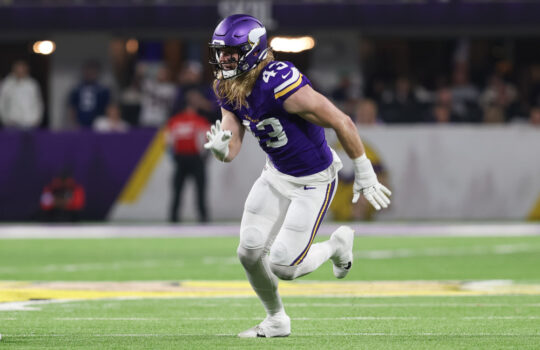



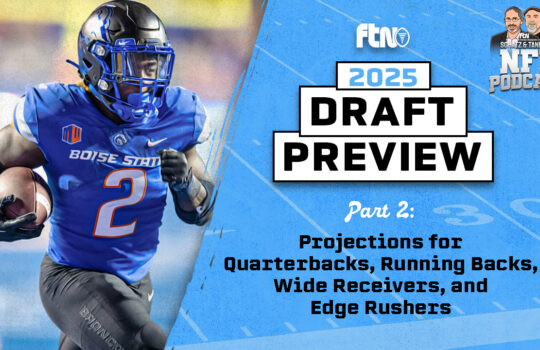

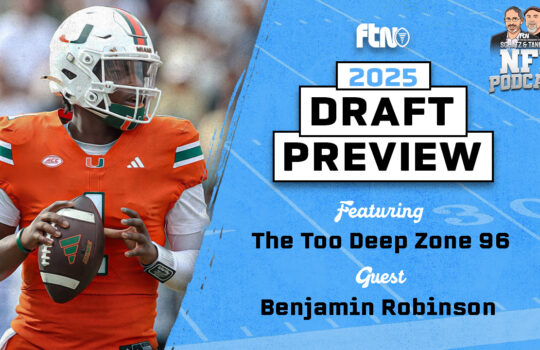









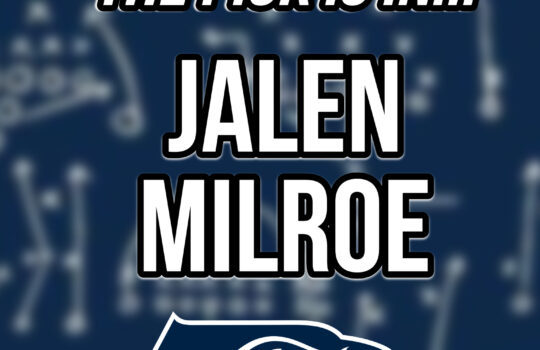




 New York Jets
New York Jets  New England Patriots
New England Patriots  Miami Dolphins
Miami Dolphins  Buffalo Bills
Buffalo Bills  Pittsburgh Steelers
Pittsburgh Steelers  Cleveland Browns
Cleveland Browns  Cincinnati Bengals
Cincinnati Bengals  Baltimore Ravens
Baltimore Ravens  Tennessee Titans
Tennessee Titans  Jacksonville Jaguars
Jacksonville Jaguars  Indianapolis Colts
Indianapolis Colts  Houston Texans
Houston Texans  Las Vegas Raiders
Las Vegas Raiders  Los Angeles Chargers
Los Angeles Chargers  Kansas City Chiefs
Kansas City Chiefs  Denver Broncos
Denver Broncos  Washington Commanders
Washington Commanders  Philadelphia Eagles
Philadelphia Eagles  New York Giants
New York Giants  Dallas Cowboys
Dallas Cowboys  Minnesota Vikings
Minnesota Vikings  Green Bay Packers
Green Bay Packers  Detroit Lions
Detroit Lions  Chicago Bears
Chicago Bears  Tampa Bay Buccaneers
Tampa Bay Buccaneers  New Orleans Saints
New Orleans Saints  Carolina Panthers
Carolina Panthers  Atlanta Falcons
Atlanta Falcons  San Francisco 49ers
San Francisco 49ers  Seattle Seahawks
Seattle Seahawks  Los Angeles Rams
Los Angeles Rams  Arizona Cardinals
Arizona Cardinals 

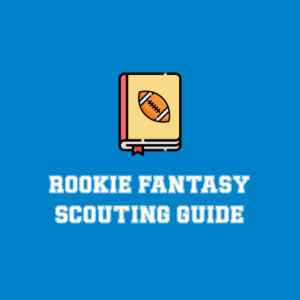






 Boston Celtics
Boston Celtics  Brooklyn Nets
Brooklyn Nets  Philadelphia 76ers
Philadelphia 76ers  New York Knicks
New York Knicks  Toronto Raptors
Toronto Raptors  Chicago Bulls
Chicago Bulls  Detroit Pistons
Detroit Pistons  Milwaukee Bucks
Milwaukee Bucks  Cleveland Cavaliers
Cleveland Cavaliers  Indiana Pacers
Indiana Pacers  Orlando Magic
Orlando Magic  Atlanta Hawks
Atlanta Hawks  Charlotte Hornets
Charlotte Hornets  Miami Heat
Miami Heat  Washington Wizards
Washington Wizards  Denver Nuggets
Denver Nuggets  Minnesota Timberwolves
Minnesota Timberwolves  Oklahoma City Thunder
Oklahoma City Thunder  Portland Trail Blazers
Portland Trail Blazers  Utah Jazz
Utah Jazz  LA Clippers
LA Clippers  Golden State Warriors
Golden State Warriors  Los Angeles Lakers
Los Angeles Lakers  Phoenix Suns
Phoenix Suns  Sacramento Kings
Sacramento Kings  Dallas Mavericks
Dallas Mavericks  Houston Rockets
Houston Rockets  Memphis Grizzlies
Memphis Grizzlies  New Orleans Pelicans
New Orleans Pelicans  San Antonio Spurs
San Antonio Spurs 











